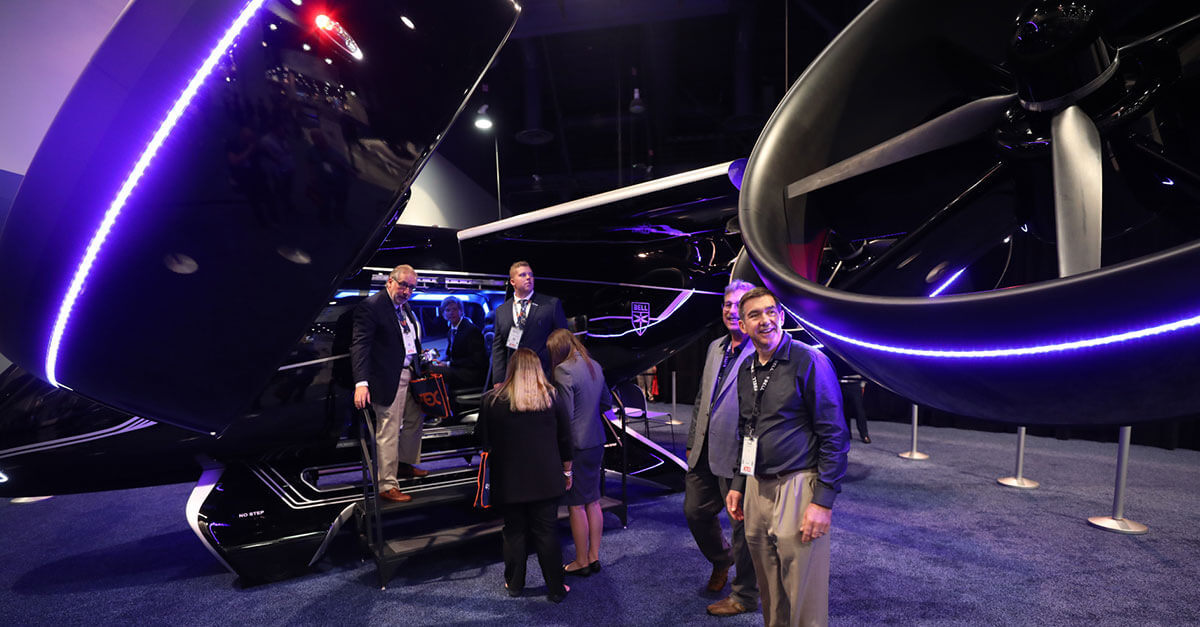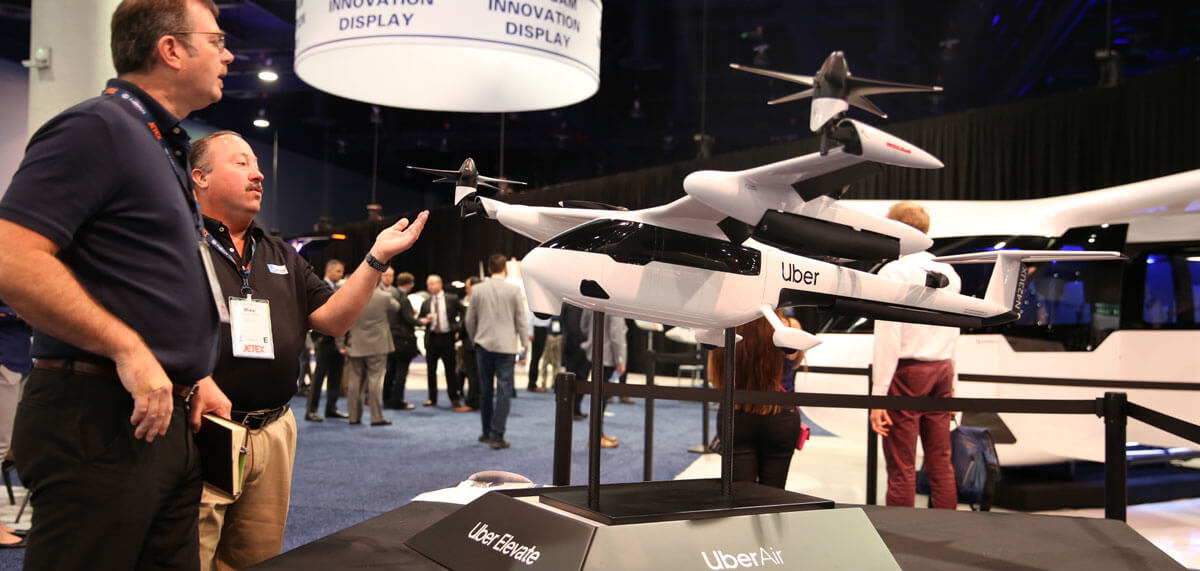Business Aviation Leading the Way on Emerging Technologies

Oct. 24, 2019
The business aviation community’s embrace of emerging technologies is evident throughout 2019 NBAA Business Aviation Convention & Exhibition (NBAA-BACE). The show’s Innovation Zone, located adjacent to a first-ever dedicated display of urban air mobility (UAM) concepts, hosted a session examining how these systems will be integrated into the National Airspace System (NAS).
“In the last six years we’ve seen the emergence of growth in small UAS [unmanned aircraft systems], [but] the scale that we are looking at with integrating [UAM] into this system is extraordinary,” said Dr. Parimal Kopardekar, director of NASA Aeronautics Research Institute. “Forecasts call for millions of these vehicles within 20 years, so how do we integrate them without lowering safety standards?”
Jacob Velky, UAS manager for Duke Energy, already has experience with integrating UAS into his company’s manned operation for use with powerline inspections and other duties. “Integration starts with adding a new tool to the toolbox,” he said. “We’ve had our aviation department for decades, and we later added the utility aviation department. Adding [UAS] was just the next logical step.”
That said, there are significant differences between flying smaller UAS over relatively remote areas, and skies filled with electrically powered vertical takeoff and landing (eVTOL) aircraft over large cities. While there are technical hurdles to be overcome, the biggest challenges appear to be regulatory.
“Coming from a manufacturer standpoint, one of the biggest changes has already occurred: the revision of Part 23 standards that weren’t really built to enable a lot of this new technology,” said Kate Fraser, head of safety for Joby Aviation. “That’s why we’re now seeing UAM really starting to take shape, but there’s a lot more than needs to happen.

“We can build an aircraft that can be certified and flying tomorrow,” she continued, “but how does it fully integrate in the airspace when it becomes a fully autonomous solution?”
Despite this challenge, Velky downplayed concerns the NAS will need to be drastically overhauled to accommodate UAM. “It would be very difficult to holistically change the airspace structure that we’ve all grown familiar with,” he said. Instead, Velky pointed to a potential solution similar to the current authorization system required for small UAS to operate in controlled airspace.
Working through such issues is the goal of NASA’s UAM Grand Challenge program, a series of activities aimed at solving operational challenges to inform future UAM regulations. “There are two primary goals for this program. One is to kickstart this industry as soon as possible, and the second is to raise the maturity level [of this technology],” said Kopardekar
Brad Hayden, founder and CEO of UAS maintenance, repair and overhaul (MRO) network provider Robotic Skies, and chair of NBAA’s recently formed Emerging Technologies Committee, noted that autonomous UAM flight operations won’t be the only regulatory hurdle that will need to be overcome.
“If there’s not a pilot anymore, who’s walking around the aircraft to make sure it’s ready to take off, that the door is shut or there’s no cracked antennas or any other maintenance issues?” he asked. “It’s going to come down to the maintenance technicians and ground support, and that will require an entire new standard of training that will need to be set to support that automated environment.”
Despite these and other challenges, it’s clear that UAM is moving ever closer to fruition by the day, and that business aviation will be driving that process forward.
“This is all business aviation,” Hayden said. “We may ultimately see a time when people buy eVTOL and actually start flying around for fun or whatever, but the primary focus of this emerging industry is absolutely the operation of an aircraft to conduct business.”
Any person who attends an NBAA convention, conference, seminar or other program grants permission to NBAA, its employees and agents (collectively "NBAA") to record his or her visual/audio images, including, but not limited to, photographs, digital images, voices, sound or video recordings, audio clips, or accompanying written descriptions, and, without notifying such person, to use his or her name and such images for any purpose of NBAA, including advertisements for NBAA and its programs.
Related Articles
March/April 2024
FAA’s Top Airport Official Discusses Safety, AAM and Vertiports
February 5, 2024
Podcast: Should Aeronautical Activity Be Redefined?
January 17, 2024
NBAA, Association Partners Voice Concerns with Aeronautical Activity Definition
October 19, 2023


 International Business Aviation Council Ltd.
International Business Aviation Council Ltd.